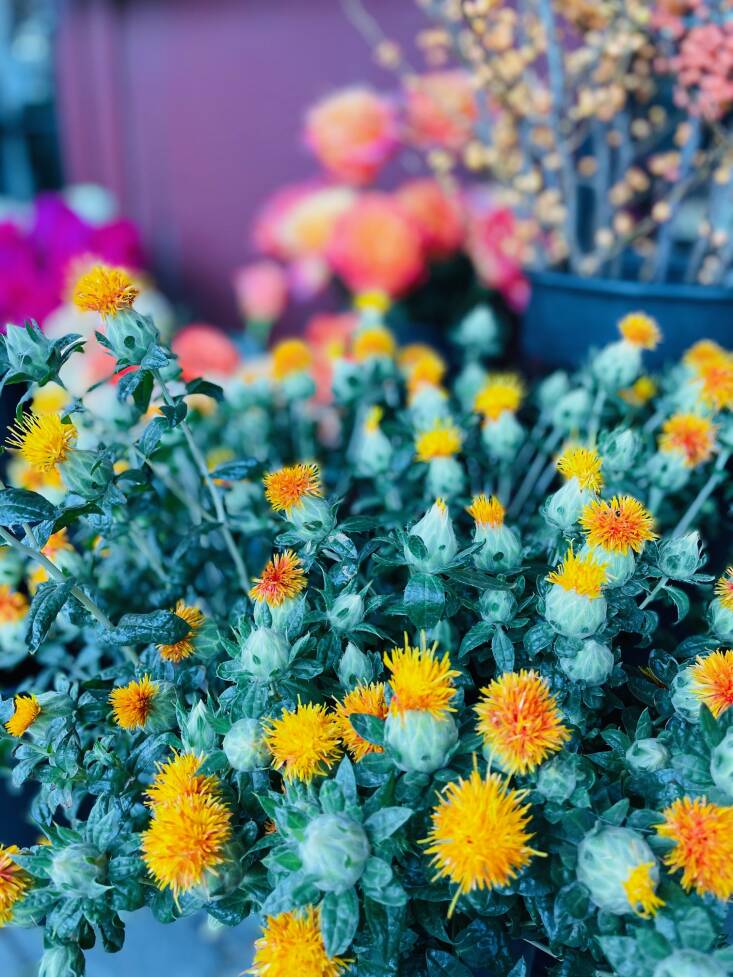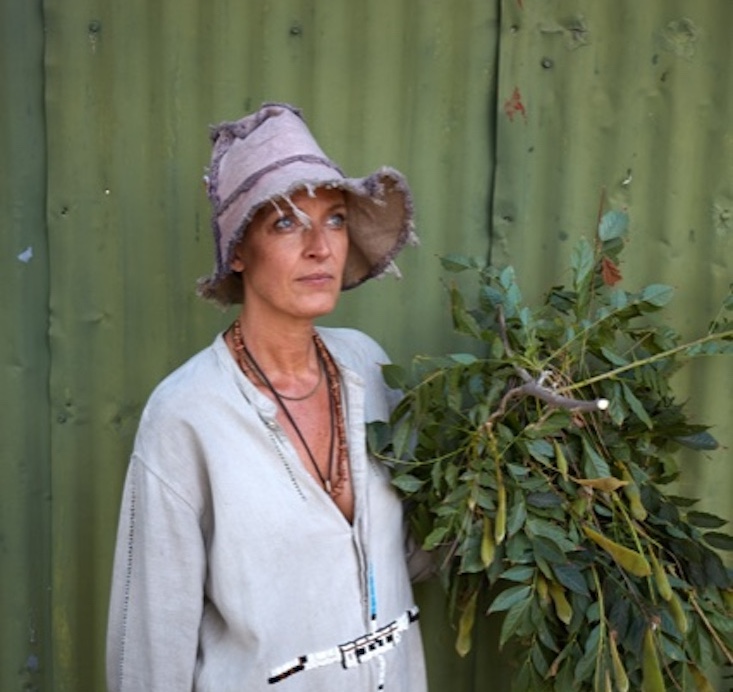Safflower, Carthamus tinctorius
The first time I discovered the blazingly cheery safflower was when I visited my florist friend Gayle at her Mill Valley atelier, Bloomingayles. Both fresh and dried safflowers were artfully added to wreaths and flower arrangements, the clusters popping with sunny brightness. Was this the same plant used to make safflower oil? The flower was way cuter than I expected. I immediately wanted to grow my own so I could harvest the orange flowers for fresh and dried bouquets.
Please keep reading to learn more about this cheerful and useful annual—and its many uses.
Photography by Kier Holmes.

Safflower prevailed in ancient Egypt as a major crop, later migrating to ancient Greece, then to China, and even to Spain. It was used for centuries to dye fabrics, to brew tea, or to flavor dishes. I love the fact that safflower makes an excellent—and way more affordable—saffron substitute in cooking, and because of its uncanny resemblance to pricey saffron, was nicknamed “poor man’s saffron.” The only snag, though, is that you won’t get that yummy saffron flavor when you swap the two, but at least you get that warm hue. Pro tip: If you add safflower to your food or drinks, always make sure your blossoms are organic and free of nasty pesticides.
Safflower is quite good at being a brightly colored, very long lasting cut flower for wreaths and bouquets. If you want fresh flowers, cut the blooming stems when the flowers are slightly open and show color. For dried flowers, cut when the flowers are completely open and then hang the stems upside down in a cool spot to air dry.

The seeds, of course, are a main asset: They can be commercially pressed into oil, or eaten raw or roasted. You can also harvest seeds in the fall when the plant starts to brown and wither, and then you can replant them next year to continue your bounty. Pro tip: dDirectly sow the seeds after the last frost and the soil has warmed to at least 40 degrees F. This plant is not fond of the cold. Sow 1 inch deep and 2 feet apart. Keep well watered while awaiting germination, then ease off on the water. Once fully grown, safflower is fairly resistant to drought.
I took a dried safflower and dissected it to gather seeds. This was definitely not as easy as finding and removing sunflowers. With safflowers, you need to carefully separate the tiny seeds from the chaff. After I did this, I put the seeds in a clean jar and will wait until spring to plant them.
Cheat Sheet

- Flower petals are edible and can be used as a coloring spice, dried for tea, infused in oil, or used as a dye with a fantastic orange hue. The seeds can be pressed into oil.
- Tufted, thistle-like flowers in yellow or orange appear from midsummer to fall.
- Add to a cut flower garden or an herb garden.
- Good plant companions are sunflowers, lavender, and zinnias.
- Attracts pollinators and especially birds like cardinals, jays, chickadees and titmouses.
- Due to its stiff, slightly prickly leaves, nibbling deer leave the plant alone, and because its seeds are bitter, deer won’t nosh on those either.
Keep It Alive

- Hailing from the Mediterranean, safflower likes a hot and dry location.
- Not a good plant choice for high humidity areas or places with abundant rain.
- Plant in well-draining, fertile soil. Also, the soil needs to be deep because this plant produces an impressively long (10 foot) tap root.
- Sprouts in 7 to 14 days and eventually grows to about 3 feet high.
- Once established, this plant is not very thirsty.
See also:
- 5 Flowers to Grow for a Starter Natural Dyes Garden
- Herbal Garden Visit: At Home with Slow Beauty Expert Justine Kahn, in Sausalito
- Gardening 101: Calendula








Have a Question or Comment About This Post?
Join the conversation